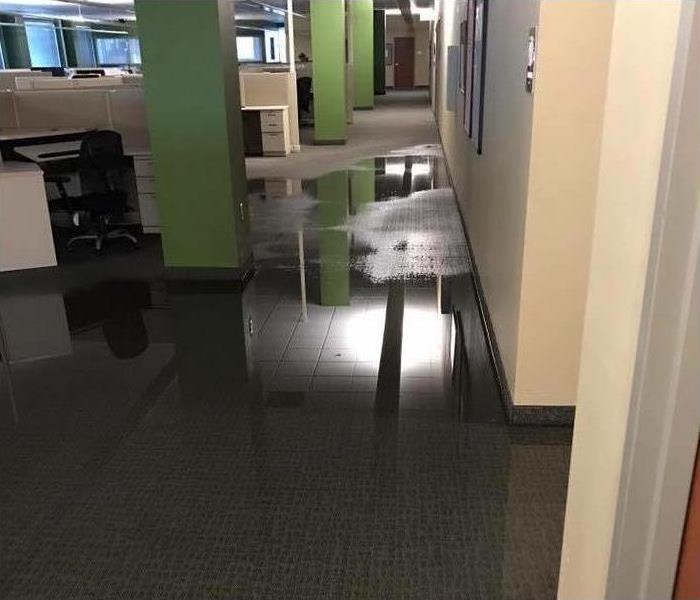Understand the Danger of Flood Waters
11/15/2021 (Permalink)
Flooding brings many dangers with it but when the water rises in Perry, OK, you may be tempted to make the best of a bad situation. After all, who doesn't enjoy a day playing in water? However, in addition to the dangers inherent in cold, racing waters, there are hazards that have to do with contaminants in flood water.
Levels of Flood Contamination
Health authorities provide measures and labels to describe the danger of water from flooding.
• Level I: A small amount of water inside a single building that can be cleaned up before it soaks into building materials
• Level II: Overflow within a single building that covers a much larger section of the interior and soaks into carpeting, drywall, etc.
• Level III: Black water from outside the building with significant damage and flooding
Heavy storms or rains could cause many types of flooding, but when they bring water into your properties, always treat the water as if it were category 3 black water. Take appropriate precautions to protect the health and well-being of your staff and any of your customers or clients.
The Dangers of Black Water
One of the most serious aspects of storm damage is black water. Because of contamination, flood water is a category 3 health hazard. Some of the pollutants in the water include raw sewage, human and animal waste, seepage from septic tanks, chemicals, drainage backflow, and fuels from vehicles. Without knowing where the water has been, it's best to assume that it has been contaminated with very hazardous substances. Avoid all contact with this water.
How to Recover From Contamination
If flood water has risen through your business properties, contact a flood remediation company to address the damages. These professionals have the tools and training necessary to thoroughly clean your premises without leaving any harmful contaminants behind. Instead of trying to DIY this serious issue, turn your focus to keeping your personnel and clients safe.



 24/7 Emergency Service
24/7 Emergency Service
